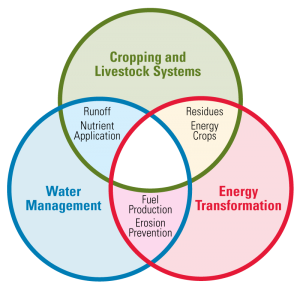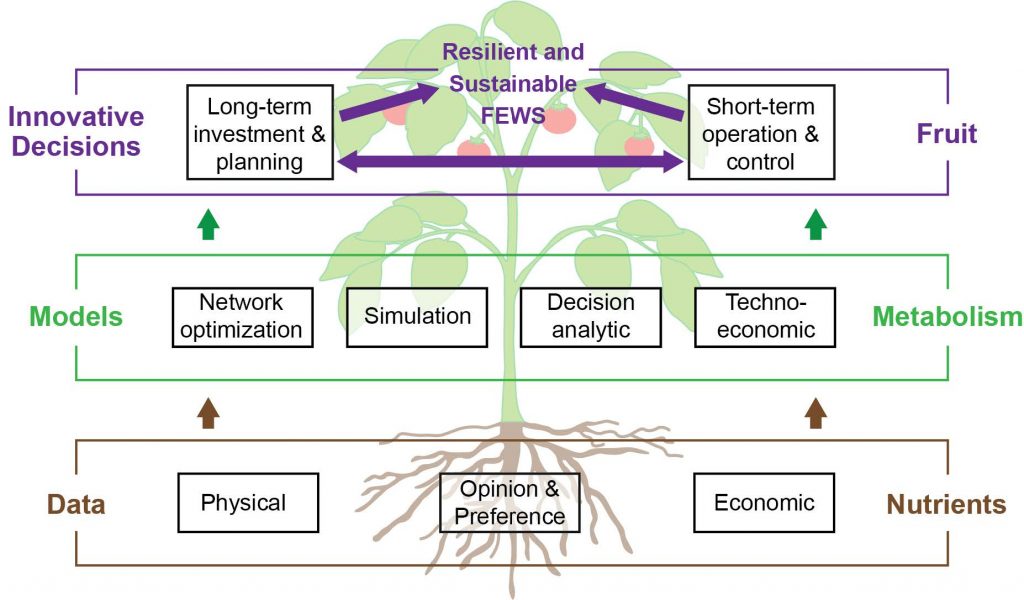 Iowa State is home to a new National Science Foundation traineeship program preparing the next generation of food-energy-water (FEW) systems innovators. Open to both masters and Ph.D. students, the DataFEWSion program offers a unique focus on data-rich systems modeling at the intersection of energy transformation, water management, and cropping and livestock systems. Link to article
Iowa State is home to a new National Science Foundation traineeship program preparing the next generation of food-energy-water (FEW) systems innovators. Open to both masters and Ph.D. students, the DataFEWSion program offers a unique focus on data-rich systems modeling at the intersection of energy transformation, water management, and cropping and livestock systems. Link to article
DataFEWSion
The DataFEWSion Traineeship Program for Innovations at the Nexus of Food Production, Renewable Energy and Water Quality in the Midwest
Agriculture occupies the epicenter of the FEW nexus and Agriculture in the Midwest brings its own unique set of interactions with the nexus of FEWS. Crop and livestock production uses water and generates runoff that degrades water quality with implications for public health, water treatment costs, and downstream ecosystems. In addition, renewable energy production from biomass can compete with food production for land and water resources. Management of water supply and quality requires an intricate balance between demand from agriculture and energy for water and other societal and ecosystem needs for water. Unique to the Midwest, each of these interactions creates opportunities for modeling, driven by sensor-based and qualitative data collection to improve the effectiveness of system operation and control, for both the short term investments and planning for the long term.
Sustainable provision of food, energy and clean water requires understanding of the interdependencies among systems as well as the motivations and incentives of farmers and rural policy makers. Effective innovations at the nexus of these food, energy and water (FEW) systems require data-rich system modeling with analytic capabilities for diverse types of data. The project aims to prepare MS and PhD student trainees for multiple career paths such as research scientist, bioeconomy entrepreneur, agribusiness leader, policy maker, agriculture analytics specialist, and professor.
News

